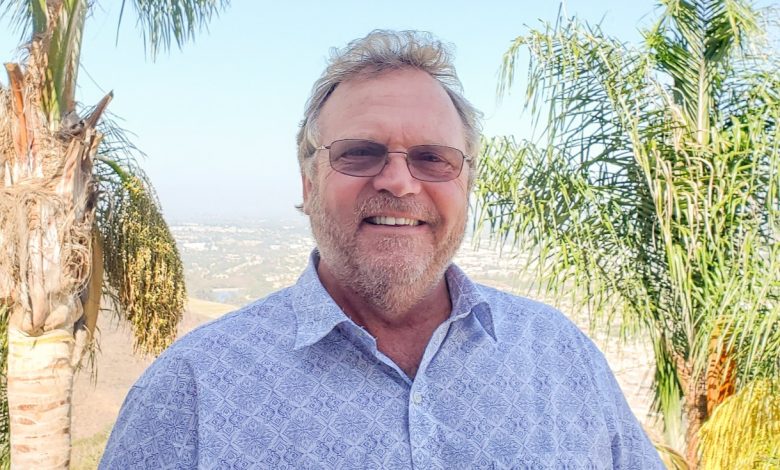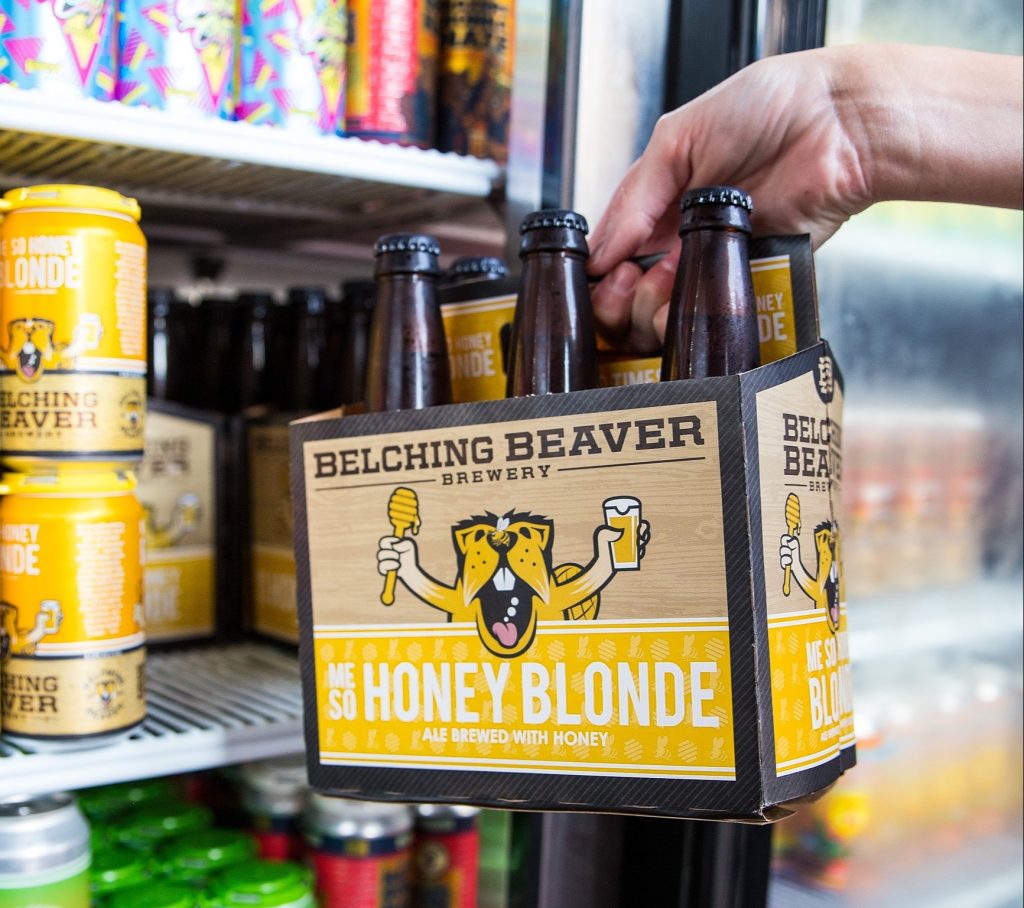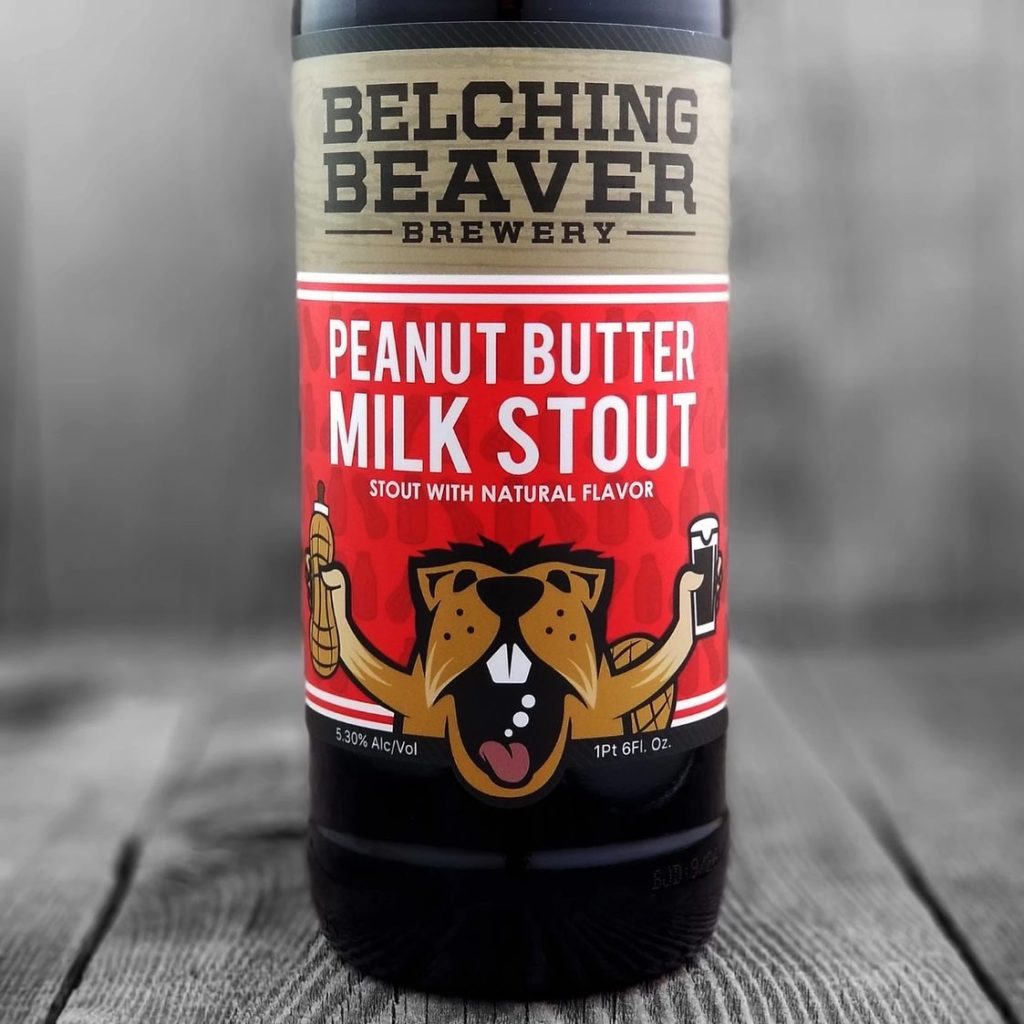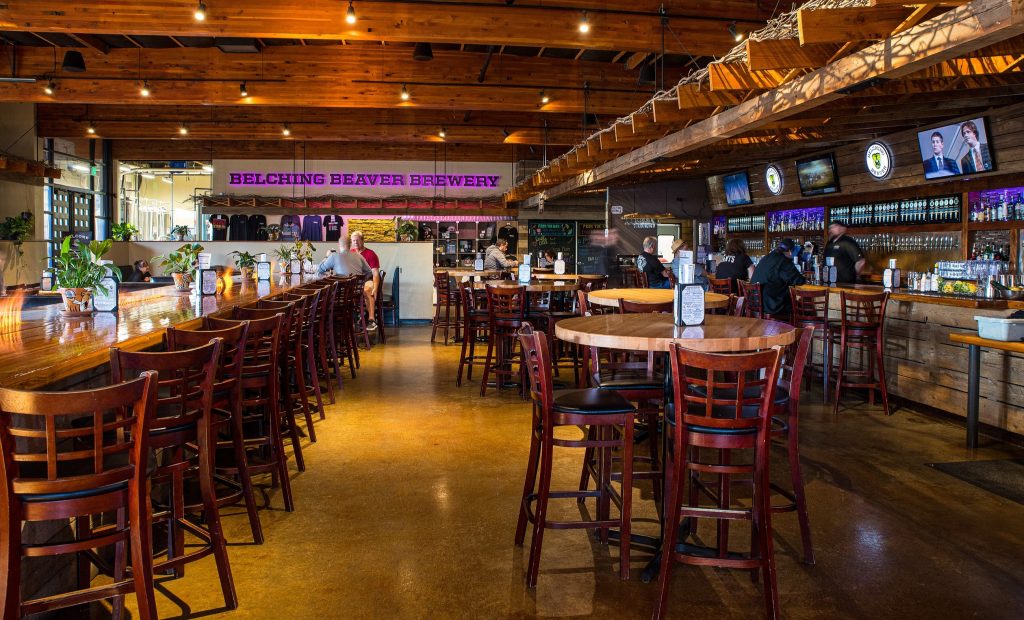Pull back the dam curtain – Part 1
Belching Beaver Brewery owner Tom Vogel opens his playbook for all to see


There are no sure bets when it comes to success in any industry, and craft beer is no different. Having the highest quality beer does not, in itself, guarantee success. Knocking it out of the park with marketing and branding can only get a company so far. Even having all the investor backing in the world can’t seal the deal (though it can really, really help). Every brewery owner must make decisions at the onset—and throughout the life—of their business, any of which could lift or sink their operation. In this, the first of a two-part guest article from Tom Vogel, the owner of Oceanside-based Belching Beaver Brewery details many of the choices he and his management team have made over the past eight years, including several that helped this company quietly become one of the largest brewing companies in San Diego County.
Allow me to explain myself
Let me begin by saying Belching Beaver is not super-successful by any means, nor do we profess to be. Many of the ideas that follow aren’t necessarily ideal and I don’t consider myself the smartest of businesspeople. That said, we did manage to start this company with three people who had zero experience, no investors and only our savings, then Forrest Gump our way into a brewing business I love to no end where I get to work with people that have become my family. Nothing here is a slight against any other brewery or how they manage their companies, pursue their goals, or run their businesses compared to what we’ve done. This is only about what we did and why.

Where we are and the ethos that led us here
Eight years into Belching Beaver’s existence, we have a family that’s 170 members strong. Our goal from the start was to be a production brewery and we now distribute beer to the West Coast, Hawaii, Alaska, Minnesota, Wisconsin, Canada, Mexico, China, Japan, Australia and the U.K. From time to time, we ship to Western European countries and are about to open Texas and Aruba. We expect to finish the year having produced 45,000 barrels of beer despite losing basically all of our draft accounts due to COVID-19. We have five locations, two of which are restaurants—Belching Beaver Brewery Tavern & Grill and PUB980. And best of all, we still have our original crew.
When we decided to open a brewery, we went all-in. I turned my other business over to my wife and, although I promised her that I could still do both, I found out quickly that I couldn’t. My minimum workdays were 7 a.m. to 9 p.m., including weekends. For the first couple of years, I mopped floors, cleaned toilets, and sanitized tanks. There was no glamor at my level, but I loved it. The learning curve was vertical. In addition to my janitorial duties, I became a bookkeeper, sales director, CEO, and one-man legal department. I was paid what I was worth…nothing. It’s a standard story for anyone starting a business. Though we took a strenuous, no-guts-no-glory approach, we also wanted the experience to be fun for everyone involved. In fact, that’s our mission statement. To that end, when we saw craft beer starting to mimic the wine scene, becoming less inclusive and more expensive, we set out to make the highest quality beer we could while avoiding pretentiousness. That’s the goal of our company’s name. You can’t be pretentious with a name like Belching Beaver.
We opened with a milk stout, blonde ale, saison and some IPAs—something for everyone. We went with those styles after taking suggestions so we could brew what patrons would actually want to drink. That’s still how we operate. Our customer is our boss. When we came out with our first hazy IPA, we looked around our tasting rooms and saw everyone drinking it, so we started making more. Lots of people talk about “chasing fads,” but when we see something new and popular, we think, “let’s try that.” Our brewers don’t often like making the same thing all the time, so new challenges are fun for them.
Of course, when a beer takes off, we’re going to keep brewing it. When our Brewmaster Troy Smith first brewed our milk stout, we added different adjuncts to make other beers, pumpkin spice and things like that. One day, he had the idea of putting peanut butter extract in the beer and asked Dan Love from nearby Mother Earth Brew Co. where he purchased the all-natural product that they used in a one-off beer they did for Urge Gastropub and now produce under the name Sin Tax Imperial Peanut Butter Stout. The peanut butter with the milk stout as a base seemed to hit the right spot for our customers and that beer was born. We offered it at every event and meeting with retail accounts. Other breweries had similar beers but offered them as one-offs or seasonals. We really got behind our Peanut Butter Milk Stout and made it a core style. So now we’re known for that. Every brewery I can think of that has gone regional has at least one or more such defining beers.

Business decisions that worked for us
Self-Delivery: Early on, the most important thing we did by far was self-delivery. We delivered all of our beer in San Diego until we reached around 60,000 case-equivalents per year. We had two old pickup trucks and an old van we wrapped. This was the mighty fleet we used to make deliveries five times a week. It helped with three things. First, there was income. A lot of the broad-market customers pay COD (collect on delivery), so we had money coming in every day and that extra 30% we got over the distribution channel was crucial for growth. Second, was receiving instant customer feedback. I would drill our sales reps for information from our customers on our products. I really miss that aspect. Lastly, it became a salable asset. Most people will tell you that distributors don’t buy distribution routes form breweries. Luckily for us, that was not the case. While self-distribution is not easy on production, it is an asset on a certain level. We were able to sell our distribution to Crest and invested every bit of those funds into a new production facility.
Expansion: Many people think we expanded in order to bring in additional revenue, but for us, expanding was all about market awareness. Our brewpubs and satellite tasting rooms are about getting the Belching Beaver name out there. We increased on-premise and broad-market sales by 450% after we opened our North Park tasting room. If we see an area where we do not sell a lot of beer, we will install a tasting room. In Ocean Beach, we normally sell more than 10,000 pints a month, so that’s roughly 5,000 people trying our beer and getting to know the brand. Our production brewery sells beer to those locations at the same price we sell to other businesses, so we do create a big customer for ourselves, but these locations are not real profit generators, nor do we look at them that way. For us, it’s production. Over the last couple of years, we have slowed down expansions to increase production capability.

Credit: In business, perfect credit will get you further than a lot of other things. In the beginning, we had to rely on my American Express card to take care of grain, hops, and packaging. One month, AMEX cut us off at around $70,000. I wrote a letter and FedExed it to the CEO showing them our growth and other credit-worthy items that they don’t use in their credit evaluations. Within a week, they sent us an apology and opened us back up. We now have about $300,000 a month in available credit from them. We also have available credit lines up to about $450,000, but I try not to use them. And if I do, I pay them off as soon as possible. Banks do not want to see short-term credit used on a long-term basis.
Investors: This is an arguable subject. I’ll admit to being wrong from a growth standpoint about taking on investors. Belching Beaver does not take investors. That philosophy inhibits our growth. We have never made enough product to meet demand. We could have grown much faster if we took on investor money, especially before we had financials warranting more credit, but I don’t take investors because I do not feel comfortable risking other peoples’ money, nor do I want to be beholden to anyone or have people second guess our direction or decisions.
Financing: We have a good relationship with our bank. Our personal banker at Chase is a workaholic. I will fire off an email at 11 p.m. and she will email me right back, but I hate debt. This is another business philosophy inhibiting growth, which has also slowed us down. Customer demand forces our equipment purchases. My hesitation loses us income. There’s no doubt about it. And since we’re on the subject of money…
Real Estate: We buy our buildings if we can. Once we had the financial wherewithal to buy real estate, that’s what we did. We now have more equity in our Oceanside headquarters building than we have debt in the company. If we sold that building and leased it back, we would have no debt other than our monthly cost of goods. When we finished the Tavern building, I refinanced it and pulled out $1.5 million to pay off short-term loans. The Tavern location pays the mortgage through its lease. We are looking for new places now, but only to buy. A lot of breweries do this and, in my mind, it’s a good, sound practice.

